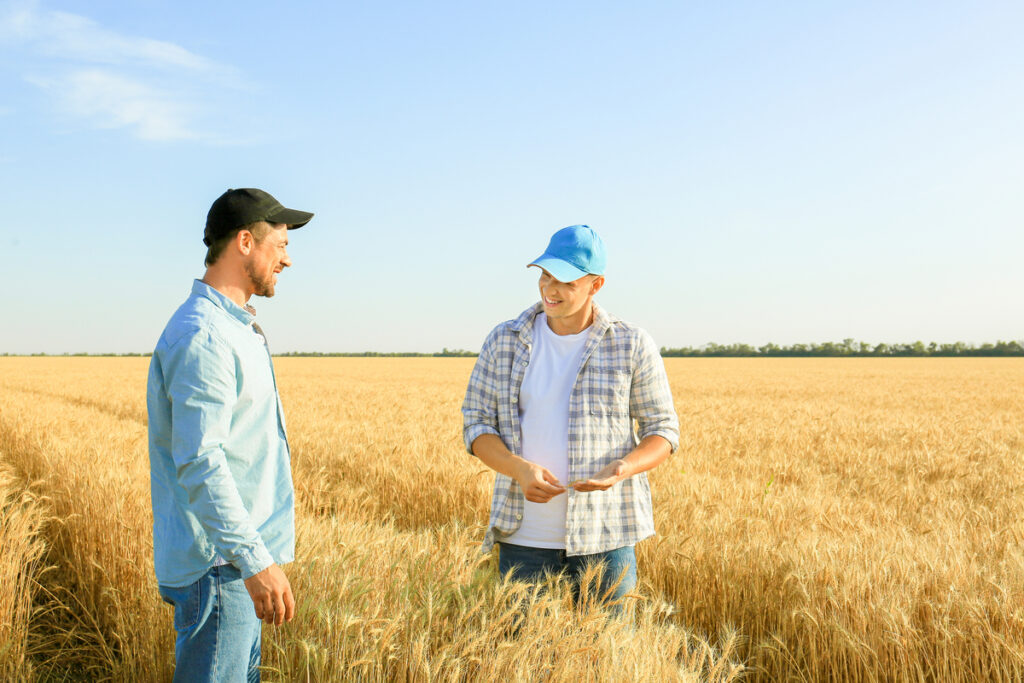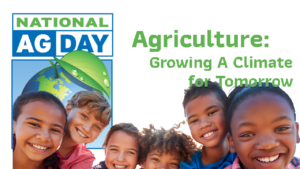According to McKinsey & Company partners, Daniel Aminetzah and Nicolas Denis, the world could be facing a significant food crisis in the near future. They explain, “The pandemic. Supply chain strains. Climatic events. Converging disruptions have sent food prices soaring — and Russia’s invasion of Ukraine, one of the world’s six breadbasket regions, risks tilting the food system into global crisis.”[1] Science writer Max G. Levy adds, “Right now, 325 million people are acutely hungry. 35 million Americans don’t know where their next meal will come from. The world’s food systems are uneven, fragile, and only becoming more fragile with the climate crisis.”[2] With more mouths to feed each and every day, global food security remains a serious challenge.
The Past is Not Prologue
Aminetzah notes, “In the past couple of years, the global pandemic has clearly tested, and in many cases proved, the resilience of the food system.” Of course, it wasn’t all smooth sailing during the pandemic; however, agricultural products did continue to move around the globe. The most important commodities for global food security are grains — wheat, maize, and rice account for over half of all human caloric consumption. The fact that grains underpin global food security is one reason so much attention has been given to the conflict in Ukraine. Even though global food value chains have proven generally resilient in the past, it doesn’t mean they will continue to be resilient. Resilient global food value chains are important because many countries rely on trade to fulfill their food needs. This is especially true of developing countries, where food security and food value chain resilience are in short supply. As communication specialist Karen Michele Nikos-Rose explains, “Countries in the Global North with low production capacities control a significant share of [the global food] supply chain given their purchasing power and location adjacent to important wheat trade hubs.”[3]
Aminetzah observes, “Despite efforts to strengthen the global food supply, and the overall resiliency we’ve seen in the past couple of years, we are quite concerned. The world, to some extent, seems unprepared for the crisis unfolding now.” One reason for concern, according to Denis, is that disruptions in the agricultural sector — from weather, conflict, etc. — are different than in other supply chains. He explains, “The agricultural value chain is a bit more complex than other supply chains because there are some specific windows for preparing the field, for planting, and for harvesting.” If you miss those windows, you’re in trouble. You can’t, like a manufacturing line, restart the process once disruptive activities have passed. Growers generally have to wait a full year for those windows to once again open.
The Way Ahead
As with most global challenges, there are no silver bullet solutions or one-size-fits-all strategies for dealing with food security. Below are few recommendations from the experts:
• Strengthen Regional Value Chains: Nikos-Rose explains, “To correct the unbalanced structure of the trade network, researchers [from UC Davis call] for more emphasis on regional and localized food systems, because well-functioning local food systems more effectively counter shortfalls and perturbations in the larger globalized food system.”
• Avoid Foolish Trade Policies. Denis suggests, “We could try to avoid some of the mistakes we saw ten years ago in the previous food crisis. Back then, we started to see some countries banning exports and therefore worsening the internal situation — farmers not having access to global revenues, countries not able to import. Limiting those trade restrictions is a way to come together.”
• Eliminate Waste and Make Supply Chains More Circular. Ellen MacArthur, founder of the Ellen MacArthur Foundation and a proponent of a circular economy, suggests we take a more holistic approach to the entire global agricultural value chain. She writes, “Today we know that building food systems that are resilient to shocks such as the pandemic is no longer enough. In 2023, we will be redesigning food to also help us solve pressing global challenges including climate change and biodiversity loss. For that to be possible, the whole system needs to be regenerative by design.”[4]
• Increase Crop Diversity. Communications specialist Sean Mattson writes, “Scientists have been ringing bells for more than 100 years about the decline of crop diversity in agriculture. … Economic, agricultural, technological, climatic, and political changes during the last 100 years have together led to the decline or disappearance of diversity important to agriculture, both from cultivated fields and from wild habitats. Much of the crop diversity that remains continues to face the threat of erosion or even extinction, while also becoming more homogenous across local landscapes and around the world. … Crop diversity is a critically important resource for agriculture and for human nutrition. This diversity keeps crops productive as they face pests and diseases, provides resilience during extreme weather and other shocks and offers the potential to adapt to changing climates and meet new market demands. In contributing to crop productivity and also to dietary diversity, it underpins food security and nutrition.”[5]
• Use Alternative Animal Feed. The staff at Science Daily reports, “Research from Aalto University, published in Nature Food, shows how … reorganizing food production systems to direct more agricultural byproducts and residues to animal feed would free enough material to feed about one billion people without requiring additional production.”[6]
• Leverage Alternative Sources of Protein. The staff at ADM writes, “Right now, the world is contending with two critical food challenges: the looming question of how to sustainably feed our burgeoning population and an unprecedented hunger crisis. To successfully address these issues, we must innovate, collaborate and use every tool in our toolbox.”[7] One of those tools is leveraging alternative sources of protein. They explain, “New and innovative proteins have the potential to be a powerful solution that addresses multiple food supply challenges. Bolstering our existing protein supply with additional protein sources will expand nutritious food options, which will benefit consumers looking for more choice and variety in their diets while also improving our ability to feed more people.”
• Digitize the Supply Chain. According to food and agriculture writer Daphne Ewing-Chow, “Inefficiencies have plagued the [agricultural] industry for decades, resulting in structural inequalities and exacerbating global food insecurity.”[8] She believes digitizing the global agricultural value chain can help. She explains, “The advent of digitization, artificial intelligence (AI), and big data across the food supply network provides opportunities to transform the entire supply chain, with the potential to overcome logistical issues, improve freshness, enhance food safety and security and elevate the overall customer experience.”
Concluding Thoughts
Like many experts, Ewing-Chow believes the world can no longer delay proactive measures to address global food security. She writes, “The time has come to transform the way we cultivate, produce, distribute and consume food and with the rapid growth in global population size, increasing consumer demands, rising food prices and with the negative impact that industrial agriculture is having on the environment, true transformation will not be likely without technologies that can drive improvements in scale, quality, resilience and accessibility to food.”
Aminetzah adds, “As we think about the food security situation, and if we link it to climate change, we expect this combination to further incentivize investments and behavioral changes across the board. On the innovation front, we’re likely to see much more focus by investors and other players on ag tech and food tech across biosolutions, alternative proteins, vertical farming, and many other segments. We also expect to see a noticeable behavioral shift across all the key players in the system. Farmers will likely employ more efficient use of fertilizers and crop inputs, reducing waste and the like. Consumers might explore diet changes and alternative meats for consumption. At a national level, we’ll see, hopefully, more attention to and acceleration of some transformations in key countries, especially emerging markets.” We’ll need to explore every practical strategy, take advantage of every promising technology, and push for permanent changes in stakeholder behavior if global food security is going to improve.
Footnotes
[1] Daniel Aminetzah and Nicolas Denis, “The rising risk of a global food crisis,” McKinsey & Company, 19 April 2022.
[2] Max G. Levy, “The Sustainable Future of Food Must Bring Everyone to the Table,” Wired, 28 September 2022.
[3] Karen Michele Nikos-Rose, “Global Food Supply-Chain Issues Call for Solutions,” University of California Davis News, 27 June 2022.
[4] Ellen MacArthur, “The Food Chain Should Be a Food Circle,” Wired, 2 January 2023.
[5] Sean Mattson, “Crop diversity is needed today for tomorrow’s food security and nutrition,” EurekAlert!, 20 October 2021.
[6] Staff, “Changes to animal feed could supply food for one billion people,” Science Daily, 19 September 2022.
[7] Staff, “How Technology Can Help Us Fight Global Hunger,” ADM, 1 March 2023.
[8] Daphne Ewing-Chow, “Here Are The Top Three Scalable Technologies To Combat Food Insecurity,” Forbes, 31 October 2021.





